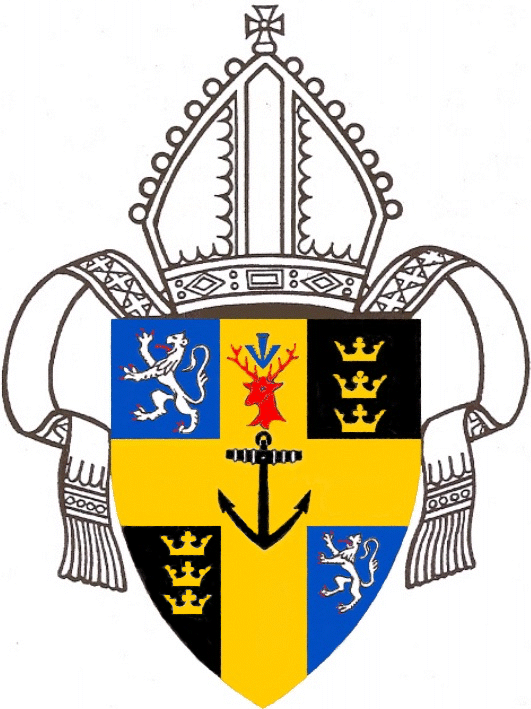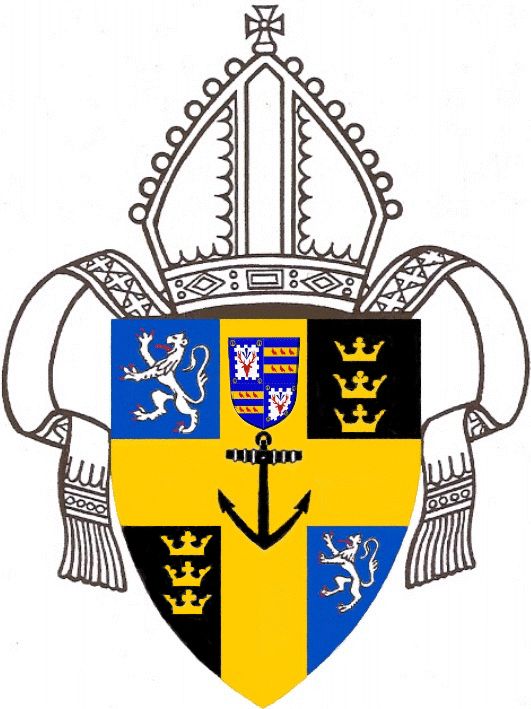Diocese of Cape Town
| Heraldry of the World Civic heraldry of South Africa |
DIOCESE OF CAPE TOWN
Denomination : Anglican
Official blazon:
Quarterly, azure and sable: I and IV, a lion rampant argent; II and III: three open crowns palewise or; on a cross throughout also or, an anchor in fess point sable and in honour point a stag’s head erased, gules, between the attires a pheon azure.
Origin/meaning :
The arms were officially granted on January 25, 1952.
This is a simplified version of the arms borne by the diocese from 1847-51. The only significant difference is the substitution of the escutcheon of Burdett-Coutts, which appeared at honour point in the earlier version, by the stag’s head and pheon, the principal charges in the Coutts arms.
“In the registers of the College of Arms, the stag’s head in the arms of Angela Burdett-Coutts is correctly blazoned as ‘erased’, but incorrectly depicted as ‘caboshed’. The use of the erased stag’s head as a simplified charge in the diocesan arms thus corrects an earlier artistic error
The previous arms were adopted in 1847.
Official blazon:
Quarterly, azure and sable: I and IV, a lion rampant argent; II and III: three open crowns palewise or; on a cross throughout also or, an anchor in fess point sable and in honour point an inescutcheon for Burdett-Coutts, to wit: Quarterly, I and IV: argent a stag’s head caboshed gules, between the attires a pheon azure, the whole within a border embattled of the last charged with four buckles or (for Coutts): II and III: azure, two bars or, each charged with three martlets gules (for Burdett).
The arms reflect four distinct elements: the service of Robert Gray in two English dioceses, the location of Cape Town in the Cape Colony and the benefactress of the diocese, Angela Burdett-Coutts.
The first and fourth quarters, together with the gold cross, are taken from the arms of the Diocese of Durham, Robert Gray the first Bishop of Cape Town having been a prebendary of Durham before his consecration.
The second and third quarters are the arms of the Diocese of Bristol, Robert Gray’s father having been Bishop of Bristol, and Robert his father’s chaplain.
The inescutcheon is in memory of the generosity of Angela Burdett-Coutts (created Baroness Burdett-Coutts in 1871), whose endowment made possible the founding of the diocese.
Literature: Images and information by Mike Oettle


